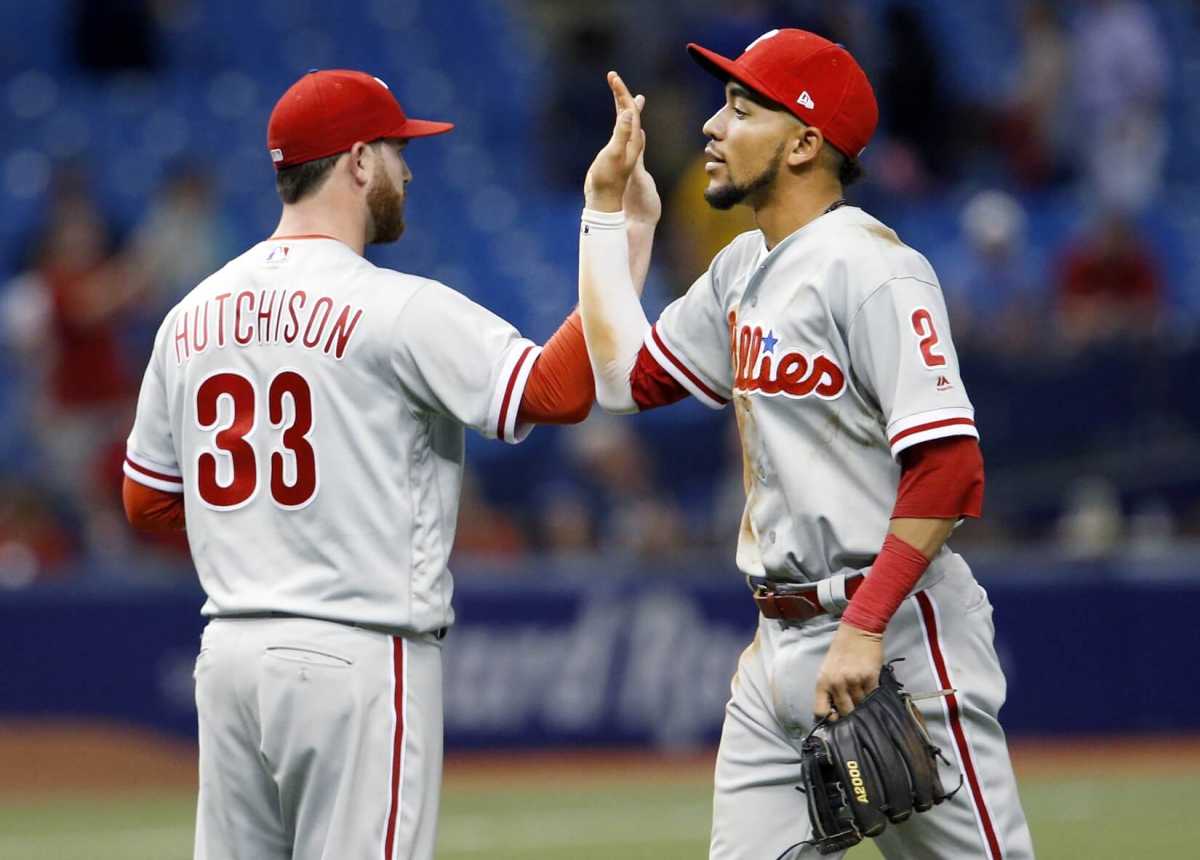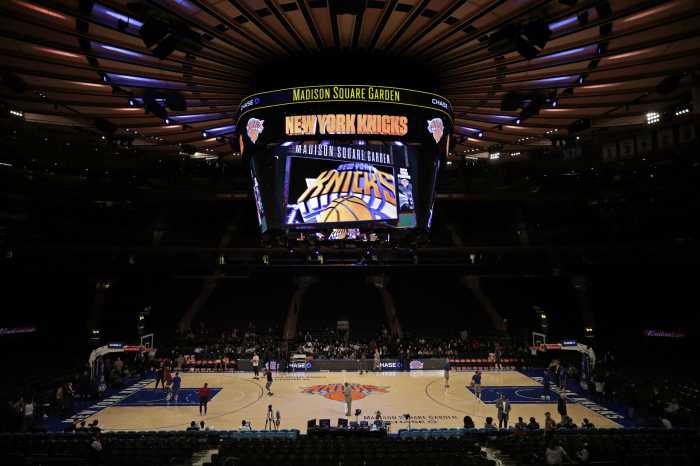Patience is a virtue.
It’s likely that your parents, grandparents and teachers drilled this proverb into your head from a very young age. Equally, you’ve likely grown very tired of hearing it preached hundreds of times, as the shear utterance of those four words sends you into flashback mode of a a more juvenile time.
But I have to echo those sentiments of the age-old axiom once more and call upon you to not drive me out of town with pitchforks and a crazed look in your eye, primarily because the Phillies are practicing exactly what we’ve preached.
The Phillies are still a relatively young team, even with the addition of Carlos Santana to the lineup, so it would not be surprising to see the offense jump a ton at the plate, looking to take advantage of any first pitch fastballs they see. But, that simply has not been the case early this season. In fact, the Phillies have been among the league’s most patient offenses through their first 13 games. Among the top 50 eligible hitters throughout Major League Baseball, the Phillies place six different times in the pitches seen per at bat rankings.
What’s even more encouraging about the six Phillies among the eligible top 50 MLB hitters are the five Phillies’ hitters who are 27-years-old or younger that appear on the list. Carlos Santana, of course, is 32-years-old, but he has become the deviation from the standard in the Phillies lineup. In his first 13 games as Phillie after a successful run with the Cleveland Indians, Santana ranks ninth in the league in pitches seen per at bat, at 4.34. Despite struggling at the plate to begin the season, picking up just eight hits in 48 at bats, Santana has set the tone in the two spot for the younger hitters by seeing more pitches per at bat than the two-hole hitters from a season ago.
In front of Santana in both the order and the top 50 rankings sits Cesar Hernandez. Midway through the 2017 season, Hernandez established himself as the sole leadoff hitter in the Phillies’ lineup due to his ability to get on base and work the pitch count, something he’s continued into 2018. This season, Hernandez has seen more pitches per at bat, 4.53, than everyone except Francisco Cervelli of the Pittsburgh Pirates. Hernandez has been a table setter at the top of the Phillies’ lineup, hitting .277 through the first three weeks of the season. More importantly, however, Hernandez possesses the most important trait a leadoff hitter can have: the ability to get on base. The second baseman is currently second on the team in on base percentage, behind just Rhys Hoskins, reaching base at a .424 clip.
As the first two hitters in a particular lineup go, often, so too, does the rest of the order. While Gabe Kapler has used a handful of different lineups throughout the early part of the season, one that he’s used consistently involves Odubel Herrera and Rhys Hoskins hitting back-to-back in the three and four spots. Each of these hitters have found a place among the top 50 in pitches seen this season, as Herrera is tied for 27th and Hoskins sits 12th in the league.
Herrera has gotten off to a torrid pace to begin the season, grabbing 16 hits in 46 at bats, good for a .348 batting average. Of those 16 hits, five have gone for extra bases. While the center fielder has struckout ten times already this year, that doesn’t diminish his .388 on base percentage through 13 games. While always being conscious of a small sample size to begin the year, that number would mark the best on base percentage of Herrera’s four year career by more than 20 full points.
Hoskins has been a revelation in his first 63 MLB games, collecting 57 hits, including 20 homeruns, driving in 58 runs, hitting .270. But more importantly, Hoskins has not been a typical young player, seeing a ton of pitches in his career. This season he’s seen an average of 4.31 pitches per at bats, good enough for 12th in the league. What Hoskins does exceptionally well is lay off pitches that he should. Often, young hitters go chasing breaking balls, especially ones down in the zone, putting themselves in a hole or ending their at bat entirely. Hoskins does not do this, allowing himself another pitch and another chance to go find his location. That’something that is not frequently seen out of a 25-year-old who’s played less than a full MLB season.
Right behind Herrera is J.P. Crawford, ranked 29th in the league. This number may come as a surprise to many due to Crawford’s early struggles this season. Despite a productive week, Crawford is still hitting just .167 to begin the season. He has walked five times this season, however, as his on base percentage is nearly 60 points higher than his average. Should Crawford’s batting average rise north of .200 and beyond, his on base percentage will subsequently rise, giving way to a very successful campaign. Crawford’s ability to see pitches will do nothing but bolster his success as he moves forward. Should he continue to see additional pitches, Crawford could find his name moving up in the lineup as his career goes on.
Rounding out the Phillies’ group of top 50 players in terms of most pitches seen per at bat is the new wonderboy, everyone’s favorite rookie, Scott Kingery. Kingery sees exactly four pitches per at bat through 45 at bats, good for 37th in the league. The super-utility player has 12 hits in 12 games thus far, including eight extra base hits. He’s driven in nine runs and is hitting .267. Kingery’s lone blemish thus far is his 12 strikeouts in 12 games, but even in his punch outs, the 23-year-old is seeing a great deal of pitches, allowing him to get exposure to a multitude of different Major League pitches that he’s not seen before.
With six consecutive wins, the Phillies sit alone in second place in the NL East, three games behind the red-hot New York Mets. The offense’s ability to see far more pitches than they have in the past leads to higher pitch counts, shorter outings from starting pitchers, and a forcing of managers to dip into their bullpens earlier than they’d like. It’s a simple concept, but it;s one that’s effective.
Mandatory Credit: Reinhold Matay-USA TODAY Sports



























